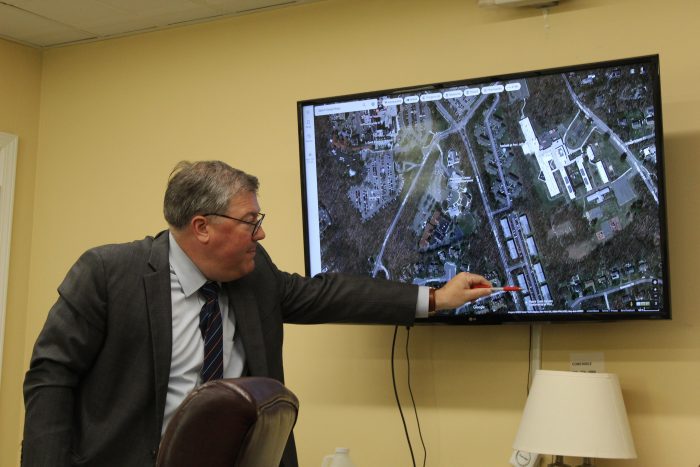For Maryhaven, Port Jeff village board weighs historic preservation, density and conservation

Conversations on the Maryhaven Center of Hope property at Myrtle Avenue picked up on Tuesday, April 25, to be followed by a public hearing scheduled for next week on Monday, May 1.
During a work session of the Port Jefferson Village Board of Trustees, the Maryhaven debate evolved into a game of tradeoffs and compromises, the board working to encourage the preservation and adaptive reuse of the historic building on-site through incentives.
Among the agreed-upon incentives package to preserve the structure, the board settled upon allowing for additional stories and height. The board, primarily at the direction of trustee Rebecca Kassay, remained unwilling to allow for further clearing of woodlands on the property.
The building “has a lot of meaning to the community, the Maryhaven complex,” said Mayor Margot Garant in an interview. She added the board’s current direction represents “an effort to give incentives so that the Planning Board can do their job with the applicant while preserving a historic building.”
The board is working on revising Section 250-15 of the Village Code. Village attorney Brian Egan clarified the proposed code changes. While Maryhaven is currently zoned as a Professional Office P-O District, the existing zoning code enables applicants within the P-O district to apply for rezoning for Moderate-Density Residence R-M District development through a special-use permit.
The proposed new section of the code aims to encourage applicants to preserve historic buildings and structures on their properties.
The Maryhaven “building is pretty special with the red and the views and the copper — it’s a special place,” Egan said. “But developers don’t care about that. Developers don’t care about special, so how do you give them an idea to motivate them to be special?”
To do that, the village attorney proposed a modification to the zoning code that covers the conditions of the special-use permit for parcels that contribute to the architectural or aesthetic character of the village.
“It’s kind of giving a tradeoff,” he said. “We say that if you have a contributing, architecturally and aesthetically important parcel or building … then you can have a proposed loosening of some of the standards that would normally apply in R-M.”
The loosening of those standards went under scrutiny during the meeting, with board members going back and forth over which incentives are permissible.
“If we don’t provide enough of an incentive, they’re just going to take this building down,” Garant said. “And if not this applicant, the next one.”
Going through each of the zoning parameters under the code, the board fixed its attention on clearing permits in particular.
Throughout the exchanges, the trustees wrestled with establishing a coherent policy that accounts for the competing values of preserving historic structures, limiting clearing and making such redevelopment initiatives cost-effective for developers.
The current P-O limit for clearing is 65%. Noting some of the general trends on clearing allowances as well as the recent village history, Kassay remained firm on not granting developers any additional allowances on clearing.
“This is something that we’ve seen our community get very upset over,” the trustee said, expressing zero tolerance for additional clearing “because we are offering these other incentives.”
Those perks would be an extra story and added height on the property, a tradeoff of density for environmental conservation and historic preservation. The board agreed to change the maximum number of stories to four and the maximum height of the structure to 47 feet.
Following the meeting, Garant summarized the conclusions of the work session. “We did not permit additional clearing” under the new incentives package, the mayor said. “If you can’t give more clearing and you want to have something built there, another tradeoff instead of sprawling it is making it more dense, giving it height.”
The mayor added that the incentives allow for “something that conforms to the preexisting building.”
The board will continue this conversation in just days with a scheduled public hearing on the matter on Monday, May 1. The general meeting of the board will begin at 6 p.m.






